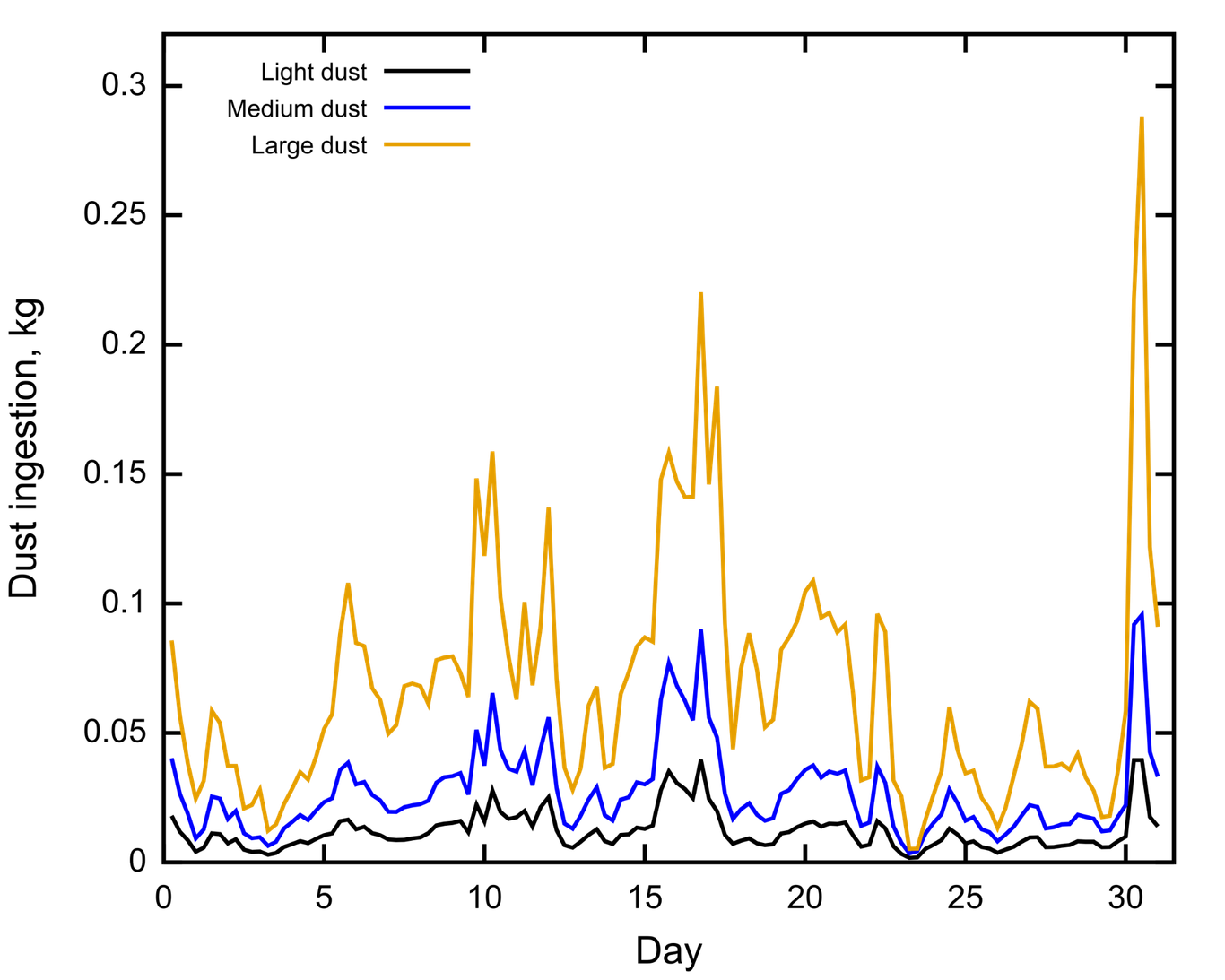Technical Note: Harsh Environment Operations
Flight into dust and volcanic ash
FLIGHT-X has the ability to simulate the effect of dust and volcanic ash ingestion when flying in harsh environments. The instantaneous, maximum and dosage values can be computed depending on the size of the dust. This dust, or volcanic ash can be fine, medium or large size (the various bins are defined by their mean diameter and particle size distribution). This information can then be used to evaluate possible engine damage after each incident. It is also possible to establish the dust dosage during a loiter/hold operation in harsh environments, which can also be used for engine damage assessment.
In the figure below we show the predicted dust ingestion into a large turbofan engine in a climb-out trajectory from a Middle East airport. The dust data have been sourced the European Centre for Medium Weather Forecast, along with other data sources. The data refer to 4 daily flights over an entire month. Read the Full Report.

Another possibility is to accelerate at constant dynamics pressure, , because that minimises the increase in drag. An acceleration at constant dynamic pressure requires the product air-density x Mach to be constant. In the stratosphere, this equivalent to constant. In other words, as the aircraft accelerates, it also climbs.
FLIGHT-X will determine the shape of the drag curve up to the divergence Mach number – which will always be subsonic.
